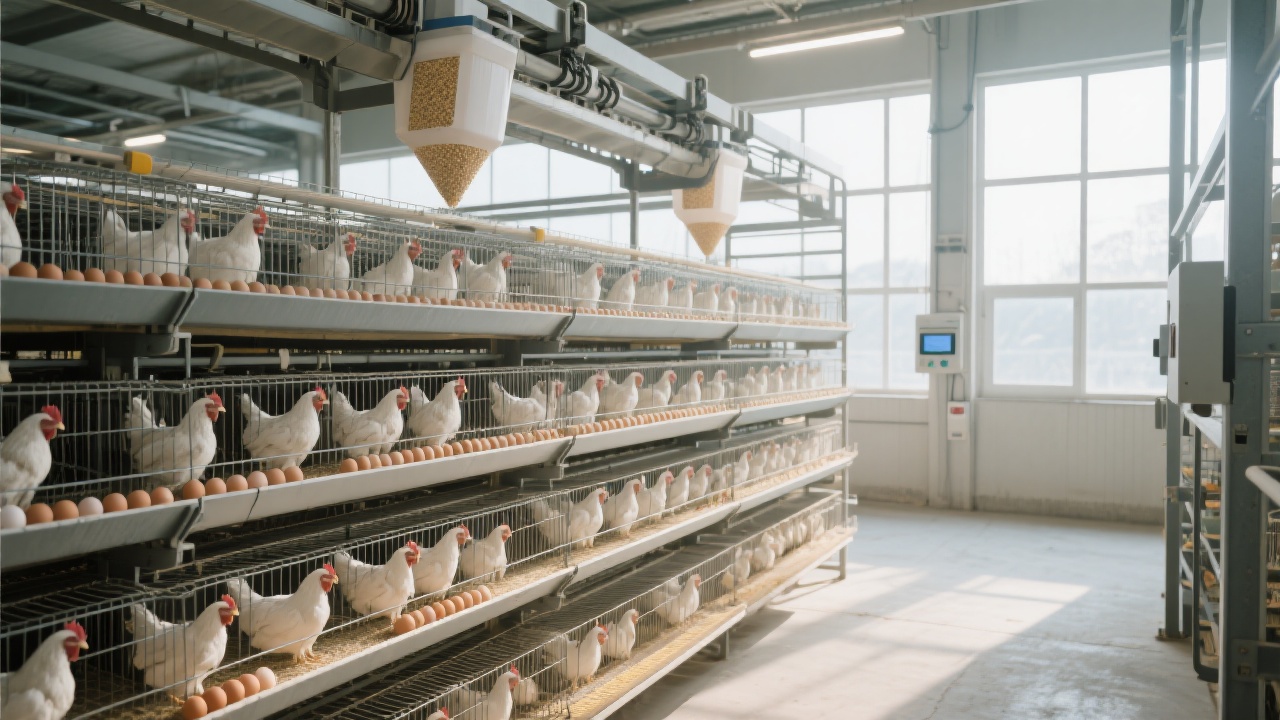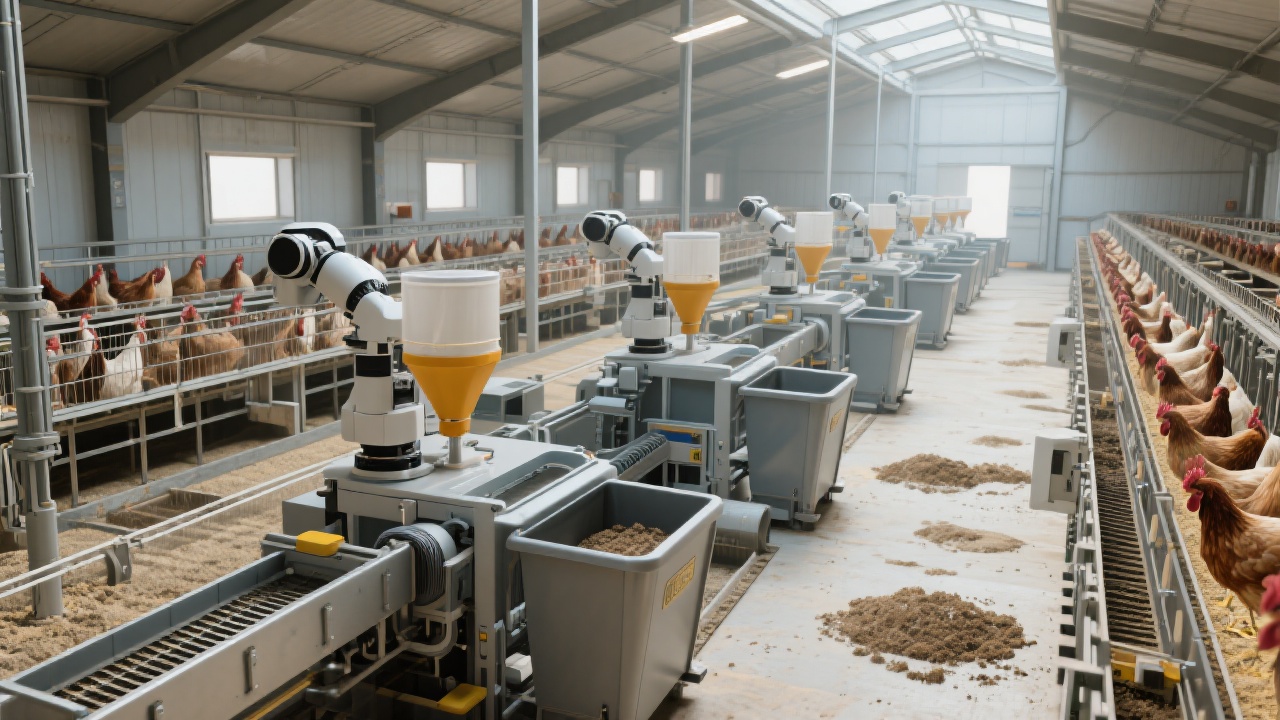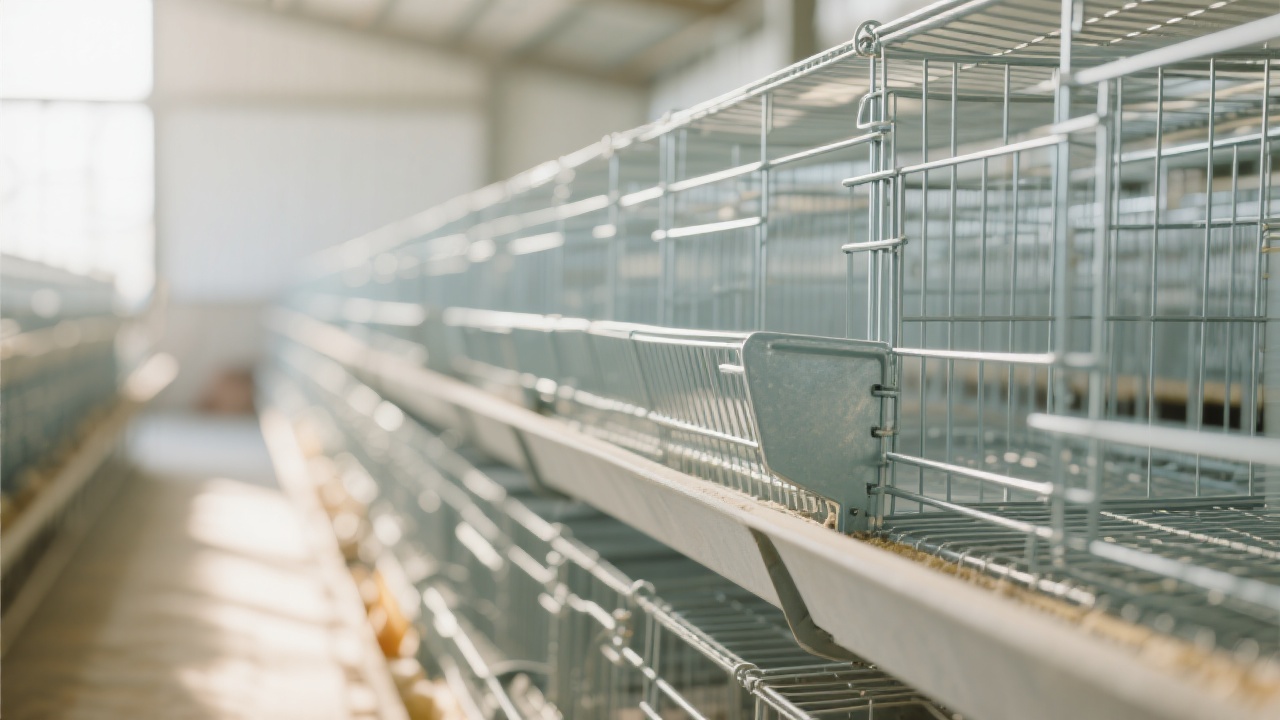
For novice farmers, understanding the spatial advantages of H-type layer cages is crucial. These cages feature a double-deck vertical layout, which significantly enhances space utilization. The vertical arrangement effectively doubles the available space for chicken rearing compared to traditional single-layer designs. Moreover, the channels within the H-type structure are carefully optimized. This optimization allows for smooth movement of workers and equipment, reducing the time and effort required for daily operations.
Imagine a two-story building. The upper and lower floors are the two decks of the H-type layer cage. Just as a building can house more people vertically than a single-story house on the same land area, the H-type cage can accommodate more chickens in the same floor space. This is the essence of its space-saving design.

From the perspective of agricultural engineering, the layer spacing in H-type layer cages plays a vital role. Adequate layer spacing ensures proper air circulation between the layers. Good air circulation helps to remove harmful gases such as ammonia and carbon dioxide, which are by-products of chicken respiration and excrement. This is essential for maintaining a healthy living environment for the chickens. For example, in a well-designed H-type cage with appropriate layer spacing, the ammonia concentration can be reduced by up to 30% compared to cages with improper spacing.
Lighting uniformity is another important factor. Proper layer spacing allows sunlight or artificial light to reach all parts of the cage evenly. This is beneficial for the chickens' growth and egg-laying performance. Studies have shown that chickens exposed to uniform lighting conditions have a more regular egg-laying cycle and produce eggs of better quality. Additionally, appropriate layer spacing can also contribute to disease prevention. It reduces the likelihood of direct contact between chickens on different layers, which helps to prevent the spread of infectious diseases.
Let's take a look at the data from different scale farms. In a farm with 5,000 chickens, after switching to H-type layer cages, the unit area egg production efficiency increased by 25%. The artificial cost decreased by 20% due to the more efficient layout and the use of automated systems. For a larger farm with 30,000 chickens, the unit area egg production efficiency soared by 35%, and the artificial cost was reduced by 30%. These figures clearly demonstrate the cost-saving and efficiency-improving capabilities of H-type layer cages.
| Farm Scale | Unit Area Egg Production Efficiency Increase | Artificial Cost Decrease |
|---|---|---|
| 5,000 chickens | 25% | 20% |
| 30,000 chickens | 35% | 30% |
The design of H-type layer cages is highly adaptable and suitable for overseas farms in various climate conditions, including tropical and temperate regions. In tropical regions, the well-designed ventilation system in the H-type cages helps to dissipate heat, preventing heat stress in chickens. In temperate regions, the cages can be easily adjusted to maintain a suitable temperature and humidity level. This adaptability makes the H-type layer cages a versatile choice for farmers around the world.

One common concern among farmers is whether the H-type layer cages will affect the health of the chicken flock. As mentioned earlier, the design of the cages actually promotes a healthier living environment. The proper air circulation, lighting uniformity, and disease prevention features all contribute to the well - being of the chickens. Another frequently asked question is about the maintenance difficulty. In fact, the H-type cages are designed with easy maintenance in mind. The channels allow for easy access to all parts of the cage, and the automated systems reduce the need for frequent manual cleaning and inspection.
“The H-type layer cages represent a significant advancement in poultry farming technology,” says an industry expert. “They offer a practical solution for farmers to increase production efficiency while reducing costs.”

Are you wondering if your chicken coop's space utilization meets the standard? Do you have similar questions about H-type layer cages? You can share your specific scenarios with us, and we'll send you 3 solution cases from the same industry. To learn more about how H-type layer cages can transform your poultry farming business, click here.

